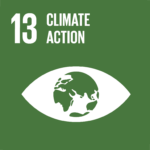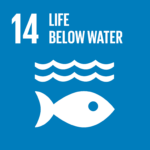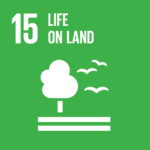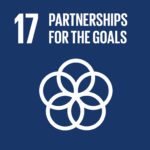The Race to Belém—seeks to mobilize $1.5 billion in private investment to protect the Amazon through carbon credit financing.
The Amazon, the world’s largest rainforest, is at a critical tipping point. Rising global temperatures, deforestation, and economic pressures have pushed this vital ecosystem closer to becoming a carbon emitter rather than a carbon sink, threatening global climate goals. Now, an ambitious new initiative—the Race to Belém—seeks to mobilize $1.5 billion in private investment to protect the Amazon through carbon credit financing.
Led by Silvania, Conservation International, and The Nature Conservancy, the program will work with Brazilian state governments, farmers, and Indigenous communities to implement large-scale conservation efforts. Unlike previous initiatives that faced criticism over transparency and real-world impact, Race to Belém aims to set a new standard by ensuring broad participation and government approvals at all levels.
RELEVANT SUSTAINABLE GOALS




A Global Climate Investment Push
Unveiled shortly after record-high global temperatures in 2024 and in the wake of former U.S. President Donald Trump’s withdrawal from the Paris Agreement, the Race to Belém initiative underscores the growing urgency for private-sector involvement in climate action.
“Consensus is clear—private sector engagement is now more crucial than ever,” said Keith Tuffley, CEO of Race to Belém, speaking at the World Economic Forum in Davos. “The urgency of tackling climate challenges has never been greater, and this initiative calls for transformative private investment.”
A New Model for Carbon Credits: JREDD+
The Race to Belém program will issue Jurisdictional Reduced Emissions from Deforestation and Degradation (JREDD+) carbon credits, a large-scale approach designed to simplify tracking environmental and social impacts.
Traditional REDD+ projects, often led by individual developers, have been implemented in countries such as Guyana, Ghana, and Costa Rica. However, JREDD+ expands the monitoring area, making it easier to measure conservation outcomes and ensure greater accountability.
The program is named after Belém, Brazil, which will host the COP30 climate summit in November 2025. The initiative seeks to position the Amazon’s protection at the forefront of global climate negotiations, demonstrating how carbon markets can drive large-scale forest conservation.
The launch also follows scientific warnings that the Amazon is approaching an irreversible threshold, beyond which it may shift from absorbing carbon to releasing it—making it even harder to achieve global climate targets.
A Financial Boost for Conservation : Model for the Asia Region
To kickstart the project, Silvania will contribute $1 per ton of carbon credit purchased, providing up to $100 millionin funding to Brazilian states. The credits will be sold at negotiated rates with potential buyers, with expectations that the initiative could save hundreds of millions of tons of carbon emissions.
The funds will be allocated over three to five years, with immediate deployment to high-risk deforestation zones. Farmers and local communities will be directly involved in the conservation process, ensuring that economic incentives align with sustainable land management.
The success of Race to Belém will not only impact the Amazon but also shape the global approach to financing large-scale conservation. As the world’s largest remaining tropical rainforest, the Amazon’s fate is intertwined with the planet’s ability to combat climate change and protect biodiversity.
The Race to Belém initiative holds significant implications for Asia and other developing nations, where deforestation, biodiversity loss, and carbon credit markets are rapidly evolving. Countries like Indonesia, Malaysia, and the Philippines, which host vast tropical rainforests, are increasingly looking at carbon trading as a means to finance conservation while balancing economic growth. By demonstrating a large-scale, jurisdictional approach to carbon credits, Brazil’s model could serve as a blueprint for nations across Southeast Asia and Africa, helping them develop more transparent, scalable, and community-driven conservation programs that attract global investment. If successful, this initiative could accelerate carbon finance policies in Asia, promote sustainable forestry, and encourage multinational corporations to invest in high-integrity carbon offsets across the region.
You may also be interested in :
Indigenous Filipinos Turn To Carbon Credits To Save Their Forests – But Will It Work ?



